Many people are familiar with the parable of the six blind men that were invited to meet an animal none of them had ever encountered before: the first one was led up to the creature and he proclaimed it being like a snake. The second one proclaimed “No, it’s like a rope” and the third and fourth one swore the beast to be like a wall and a tree (respectively). The last two compared what they felt with a spear and a fan. All of them were right, yet all of them were wrong, as they were “feeling” an elephant. All of them only have a partial picture but only together they would be able to comprehend what an elephant would be like.
The same is true about about telehealth: telehealth is like video chatting for counseling, telehealth is from a stroke evaluation in an ER, it’s for measuring your weight every day, it’s for taking pictures of moles with your smartphone. All of them are right and all of them are wrong.
Telehealth, as we use it at Ingenium, is about delivering healthcare at a distance (with telemedicine, as a subset of telehealth, being about practicing medicine at a distance). Telehealth is first and foremost about delivering care. It’s not about some fancy technology, it’s not about video and it’s not even about the distance. Many entrenched in the telehealth are rightfully arguing: “Let’s just call it healthcare” and I agree that in the not-so-distant-future, we, the patients, will not differentiate between receiving care in the office or via some electronic means in a location much more convenient to them then on the exam table.
Based on Ingenium’s taxonomy there are five key areas that comprise telehealth and telemedicine: Patient Education, Patient Portals, Interactive Patient Care, Remote Patient Monitoring and Store & Forward.
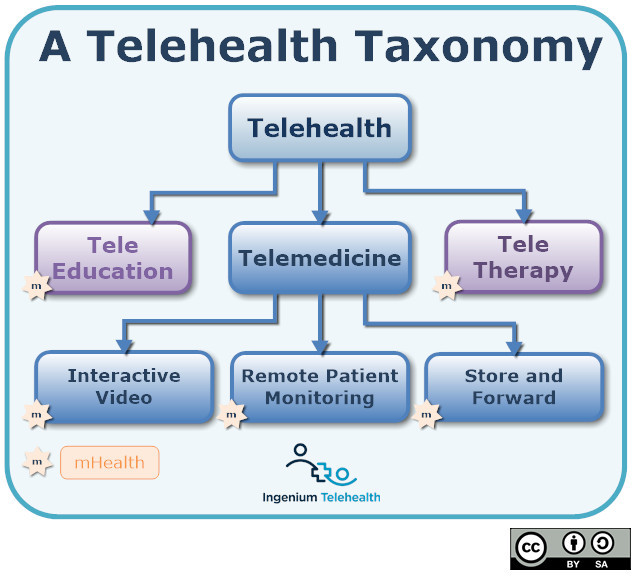


Patient Education (f.k.a. TeleEducation) allows for the electronic distribution of interactive or dynamic educational materials – may it be generic videos, pre-recorded videos by the patient’s actual provider, interactive educational tools, etc. Patient Education gives the patient the opportunity to digest all the information thrown at them in their own time and even optimized to their own learning style.
Patient Portals is the second domain of Telehealth which provides patients access to their health information and also allows them to interact, securely, with their healthcare provider either administratively (scheduling, billing) or clinically, e.g., to see test results, immunizations, or physician notes or even to send messages to their clinician.
The remaining three areas all fall under the practicing of medicine at a distance a.k.a. Telemedicine.
Store and Forward includes the long-standing practice of faxing ECGs as well as the whole wide field of TeleRadiology that has been digitally sending radiology images and videos for over 20 years. Store & Forward also includes the transmission of photos for pressure ulcer assessment, melanoma assessment, or wound care triage.
Interactive Patient Care includes all services aimed at interacting with a patient at a distance, may that be over the phone, via secure text messages, secure email or live video. The services are virtually endless: TeleConsults in Behavioral Health and other specialties to patients at home, in rural clinics, or nursing homes; TeleExams for presurgical examination, cardiological assessments of live heart sounds, dermatological assessments of the skin. TeleStroke assessments for quick administration of brain saving treatments. And yes, Interactive Patient Care also includes the direct-to-consumer primary care and “specialty care lite” instances of the AmWells and Teladocs of the industry that so many people have come to equate with telehealth.
The last domain of Remote Patient Monitoring (RPM) is the one that most people do not think about when they hear “telehealth”. Yet, it is this area that currently offers the most opportunities for effective population health management, through improvements in health outcomes and by lowering the cost of care. RPM is the continuous and periodic recording and transmission of a patient’s vital signs, often including blood pressure, weight, heart rate, heart rhythm, oxygen saturation, blood sugar, etc. RPM takes on three main facets: in a clinical environment in the form of a TeleICU where the vital sign monitors as well as the ICU are monitored remotely; in invasive cardiology interventions in the form of remote interrogation of implanted pacemakers and defibrillators; and in the rapidly growing areas of chronic disease management and readmission prevention, through a vigilant observation of the patient’s vital signs to catch even the slightest deterioration of the patient’s condition to initiate immediate intervention.
The challenges for health systems, hospitals, and medical centers lie in knowing how to decide where in telehealth to get started, how to coordinate all of these new workflows, how to integrate the technologies and how to manage the any resistance to change. Looking to the vendors offers no help since also all of the 150+ telehealth vendors that we know of only offer solutions for small subsets of the overall elephant called telehealth.
What other telehealth applications do you feel we missed? Please let us know in the comments!








To receive articles like these in your Inbox every week, you can subscribe to Christian’s Telehealth Tuesday Newsletter.
Christian Milaster and his team optimize Telehealth Services for health systems and physician practices. Christian is the Founder and President of Ingenium Digital Health Advisors where he and his expert consortium partner with healthcare leaders to enable the delivery of extraordinary care.
Contact Christian by phone or text at 657-464-3648, via email, or video chat.


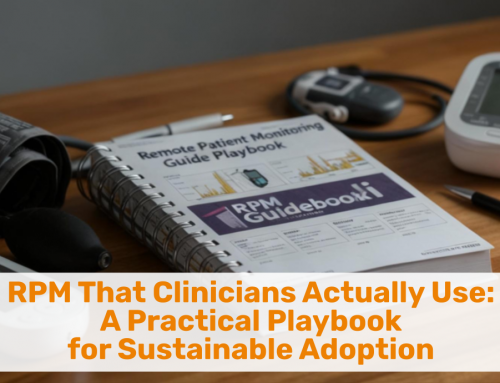
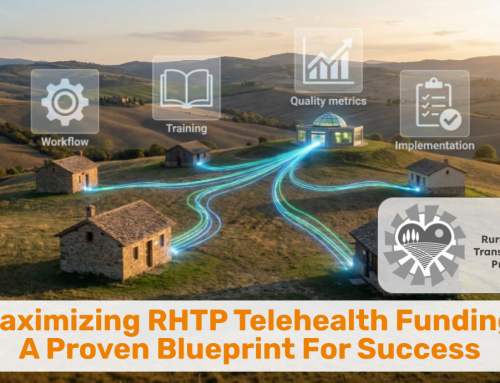

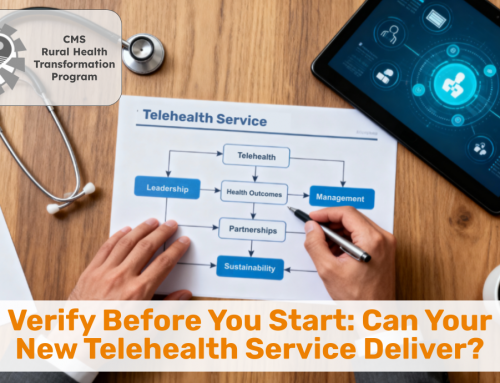
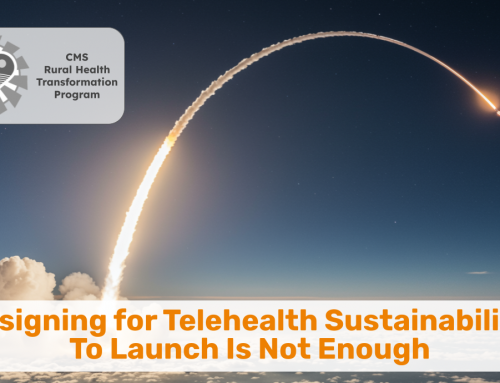
Leave A Comment